The client approached us with the idea of developing a Tech Park inside the REC Campus for the purpose of training computer science engineering students and to provide incubation centres which can host young start-ups. The aim was to encourage the recent graduates to enter the start-up ecosystem. The building needed to be completed in an express timeline of 180 days as the infrastructure was needed for the upcoming new batch. The existing facilities inside the campus were dismal and poorly equipped for computer science training. The site selected was an open land near the existing administration building. Being at the entrance of the campus, the building needed to be innovative and futuristic, symbolising the willingness of the university to adapt to the next generation of computer technology. Concept Note- Rec Tech Park [caption id="attachment_38609" align="alignleft" width="362"] The roof of the atrium was made with translucent polycarbonate sheets that allow...
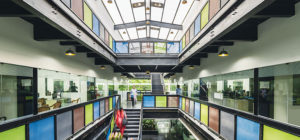
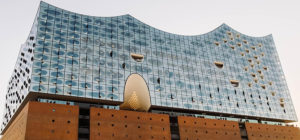
Shaping Glass Façades in Age of Parametric Design
Glass has been present for more than 5000 years on Earth. Its earliest existence was noticed in Egypt and eastern Mesopotamia, where it existed in the form of beads. Later, craftsmen around the world learned to blow it into different shapes and colours to produce unique artefacts. The first examples of glass in architecture appeared in Roman civilisations where the glass was put in wood and bronze frames to open up buildings towards outside environment. Glass gave an opportunity to experience outside environment and light while being indoors. Therefore, glass became a favourable material for wrapping buildings by architects. Many innovations happened in glass production and manufacturing, but the major shift in glass production was the result of an invention by British scientist Alastair Pilkington. Pilkington has developed the process of manufacturing float glass by casting it on the bed of denser liquid tin. This process allowed the glass to...
Posted on: 14 Apr 2020
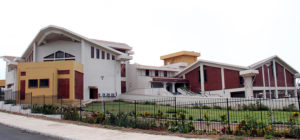
Façade Designs: Integrating Glass and Other Traditional Building Materials
In the contemporary architectural scenario, with the easy availability of large format structural glass, the tendency of indiscriminate use of glass as an external façade material, with no proper material audit and decision making, has resulted in poorly functioning buildings with huge energy demands and carbon footprint. In the present context, understanding the process involved in auditing a strategy for combining glass and natural building materials is of paramount importance. Officers Bachelor Accommodation for ONGC at Nazira, Assam The parameters one may use to audit the use of natural materials with glass fall under some broad categories: - • Energy conservation • Cost-effectiveness • Aesthetics • Building typology • Site context and vernacular • Façades and human behaviour Energy Conservation The plaster has a thermal conductivity of 0.18 W/Mk. Brick has a thermal conductivity of around 0.77 W/Mk. Normal window glass has a thermal conductivity of around 0.80 W/Mk and...
Posted on: 03 Apr 2020
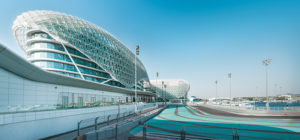
Architectural Glass: Leading the Race in the Middle East
When we saw a building, the first thing which attracts us towards it is the façade. Buildings with glass façades keep us mesmerised by the beauty it adds to the structure. The glass helps the building in connecting them with nature and the surroundings. We can see the use of glass in buildings in various forms, it is being used as insulation material, structural component, external glazing material, cladding material, etc. Glass as a building material delivers beauty, visibility, and light transmission. Glass transmits up to 80% of natural daylight and helps in energy and cost saving. Glass as become the most popular building material because of its versatile nature. The adoption of green technology in construction is also a major reason behind the growing demand for glass in building envelopes. Glass as a building material will always remain in demand. Glass transmits up to 80% of natural daylight How...
Posted on: 30 Mar 2020
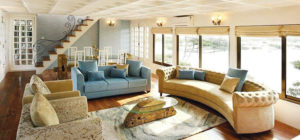
“Our Products are Inspired by International Designs, but are Priced for the Indian Pockets”
Please tell us about your company Geeta Aluminium, and yourself? How long you have been in this business and in the Indian market? In 1964 my father Late Shri Girdharilal Bajaj laid the foundation of the Geeta Group of Companies by setting up Geeta Aluminium Co. Pvt. Ltd in Mumbai. In 1977, when the architectural industry just began, my father was involved in the retail commodity market dealing in profile and hardware. For thirty years, he laid a strong foundation for the growth and development of aluminium fenestration, a concept which is in great demand in the industry till date. Geeta Group has now evolved as one of the ‘more value for money’ and quality system window companies in the country. Geeta Group has been built on the foundations of a skilled workforce coupled with technological innovation and we deliver a superior customised solution throughout the country through strong supply-chain...
Posted on: 02 Mar 2020
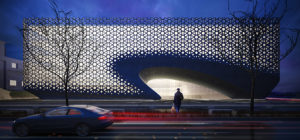
Performance Based Systems are the Future of Design
On Glass for Contemporary Façade and Fenestration: Glass is a contemporary material with the inherent quality of framing the views, creating inviting spaces and connecting the outside to the built form. It would not be accurate to classify glass as a good or bad material. It is the vision of the designer and the application that makes its use relevant to the design. Indian climate is a very wide topic itself, and we have a varying climatic condition that might require from a triple glazed windows to trap the winter heat, to twenty percent opening on a particular façade in very hot climatic conditions. Glass can well be a material of choice to achieve even a net positive building. For us, the glass selection is done in spirit of the design and the values required. We prefer using a neutral shade and DGU is our selection of glass. In our...
Posted on: 11 Feb 2020
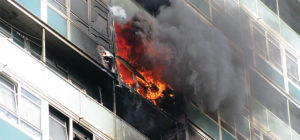
“The Holistic Design Approach to Fire Safety Starts by First Understanding How Fire Behaves”
Brief on Holistic Design approach for Fire- Safe Buildings, focusing on Façades and Fenestration Design? The holistic design approach to fire safety starts by first understanding how fire behaves. Fire behaves differently with different types of combustion materials and fuels. Further, it will depend on the oxygen supply to that fire and the quantum of combustible material available to burn. One also needs to understand how fire spreads in a building before we start selecting the various elements of a façade. The most important aspect of controlling fire spread is breaking the continuity of combustible material in the line of fire range. The design of the façade must be such that materials have virtually no combustible component and if for unavoidable reasons they have to be used then breaking its continuity is a must to prevent fire from spreading to other parts of the fire-safe buildings. Could you tell us...
Posted on: 20 Jan 2020
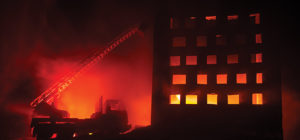
Fire Safety of Façades : Need for Fire Safe Designs & Performance Testing
A Holistic Approach To Fire Safe Facades Façade is one of the most vulnerable elements of a building, especially in case of a fire incident. With more attention to aesthetics, cost factor, energy efficiency, eye-catching materials, green concept, etc., considerations of fire safety measures have been slipped under the radar. The scenario has become more complex with the unstoppable mushrooming of high-rise buildings which pose a greater fire hazard. [caption id="attachment_35093" align="alignleft" width="217"] Vijay Kumar Shaw AGM – BD (West Zone), Alstrong Enterprises India (Pvt) Limited[/caption] The role of a façade is as complex as the building itself as it needs to strike a balance between all the parameters such as aesthetics, visual character, structural stability, solar heat gain, daylight filtration, visibility, thermal comfort, branding and programmatic zoning, among other aspects, notes Vijay Kumar Shaw, Assistant General Manager – BD (West Zone), Alstrong Enterprises India. Due to its complex nature,...
Posted on: 13 Jan 2020
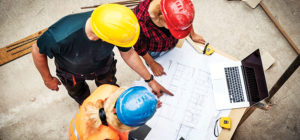
Understanding the Importance of a Fire Strategy: The Basis for Design
It is critical that all stakeholders fully understand the importance of a robust fire strategy for the success of a project within the built environment. Relevant stakeholders not only include the client and project/ design team and the local civil defence, but may also include the water and electricity providers, transport authority and facility management companies, if appointed. The understanding of the fire and life safety objectives and their implementation during the design and operational phase can be the key to future success or highlight areas of potential vulnerability in the safety of the building. Ultimately, the building design will require formal approval by the authority having jurisdiction (AHJ) and in the Middle East this will involve approval by the local civil defence department. [caption id="attachment_35062" align="alignleft" width="217"] From simple to Complex Buildings the egress planning must form part of the Fire Strategy[/caption] A fire strategy is not simply a...
Posted on: 09 Jan 2020

Dnd Unveils Five Architectural Handles
The Italian company Dnd has realised the research project “Handling Architecture”, namely five-door handles designed by acclaimed architecture firms Stefano Boeri Architetti, Alfonso Femia, Maurizio Varratta, Cino Zucchi and 967arch. [caption id="attachment_34863" align="alignleft" width="217"] DUE (Solid Brass, Different Finishes), Design by Stefano Boeri Architetti[/caption] DUE By Stefano Boeri Architetti Door handles that totally reinvent the relationship with the plate, generating an authentically new product. The design of the handle makes it approach the “archetype” in which the two traditional functional parts of the object – the grip and the attachment plate – are transformed into a pair of slender, perfect equal parallelepipeds: a solution of essential sculptural force. [caption id="attachment_34859" align="alignright" width="300"] Levante (Solid Brass, different Finishes), Design by Maurizio Varratta[/caption] (IN)FINITO By Alfonso Femia A project that entirely revises the relationship between the door and handle, granting the latter an unprecedented and previously un-imagined physical space: a two-dimensional line...
Posted on: 26 Dec 2019
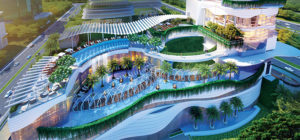
Celebrating Five Decades of Excellence in Design
Please Tell us about Your Firm Rajinder Kumar Associates (RKA)? Our firm was established in the early 1970s by my father Rajinder Kumar, and it is regarded as one of the leading architecture, planning, landscape and interior design firms in India. We have been practicing in India and abroad for nearly five decades. [caption id="attachment_33838" align="alignleft" width="217"] HCL Technology Campus, Noida[/caption] My father had practiced architecture under the able guidance of the team of Le Corbusier and Pierre Jeanerette for many years, designing several important buildings in the capital city of Chandigarh. He worked closely with these stalwarts and had a very close relationship with them. In the late 1960s, Rajinder Kumar forayed into the tourism industry and designed tourist accommodation in the hilly areas of northern India. Five decades later RKA has contributed more to the tourism industry in India than any other architect, by designing the largest number...
Posted on: 24 Oct 2019
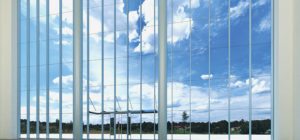
“Aluminium Extrusion Material Compliments 50-100 Years Design Life of Building Façade”
Please Elaborate on the Use & Benefits of Aluminium Extrusions Used as a Building Material, with a Focus on Whole Building Design, Sustainability and Application Possibilities. The architectural building façade uses a wide range of aluminium extrusions. Architectural aluminium is mainly produced by an extrusion process, which provides nearly unlimited freedom in designing of simple to complex shapes suiting to the building requirements. This gives a great freedom to the architect to design pleasing elevations and forms by keeping functionality and sustainability intact. Modern designs can be produced in 3 to 4 weeks’ time through die cutting and extrusion process. Aluminium extrusions being non-corrosive in nature, provide highest surface finish and possibility to enhance with the exotic finish applications like anodising and powder coating. [caption id="attachment_33626" align="alignleft" width="360"] Double Skin Unitized System[/caption] Aluminium extrusion material compliments 50 to 100 years design life of building façade requirements. Also, being non-corrosive in...
Posted on: 15 Oct 2019
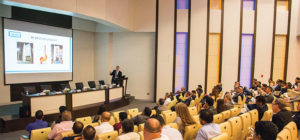
Emirates Glass Hosts the International Architectural Glass Conference
Emirates Glass, a subsidiary of Dubai Investments PJSC and one of the largest processors of flat architectural glass in the Middle East, has hosted the annual International Architectural Glass Conference at Dubai Investments House. The event was held in cooperation with the Glass and Glazing Federation MENA region (GGF). Industry experts and speakers from a range of international firms from the US, UK, Europe marked their presence and over 130 delegates participated in the conference. The conference provided an open forum of dialogue and discussion that gave glass professionals insight into a number of important industry topics including lessons from the Grenfell Tower fire tragedy, security glazing, and acoustic glazing. One of the sessions focused on the causes and lessons learned from the Grenfell Tower fire in 2017. Other sessions were on the performance of laminated glass, sealant compatibility, adhesive backed polymeric film design and anisotropy. Rizwanulla Khan, Executive President...
Posted on: 24 Sep 2019
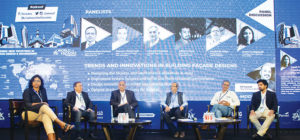
Advancing Façade Design Through Innovation and Technological Evolution
The 62nd global edition of the Zak World of Façades was held successfully at Park Hyatt, Hyderabad on 21st June 2019. Being one of the leading international facade design and engineering industry conference, it attracted over 300 delegates this time. In this 2nd edition in Hyderabad, the experts shared their thoughts on the recent trends in the facade design industry. [caption id="attachment_32780" align="alignleft" width="150"] Ashish Kapoor[/caption] The focus of the conference was on ‘Advanced Facade Design through Innovation and Technological Evolution’. Zak World of Façade conference is currently being organised in 25 countries, which include the Middle East (UAE, Qatar, Kuwait & Saudi Arabia), South Asia (India & Sri Lanka), South East Asia (Singapore, Thailand, Malaysia, Philippines, Vietnam & Indonesia), East Asia (Hong Kong, South Korea & China), Africa (Kenya, Egypt, Morocco & South Africa), Europe (United Kingdom, France, Germany & Sweden), Australasia (Australia & New Zealand) and the United...
Posted on: 12 Aug 2019
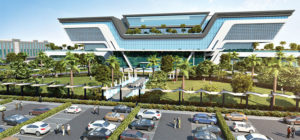
Façade Design Approach for Healthcare Projects – National Cancer Institute, Nagpur
The design of an appropriate building façade plays a very important role in healing in health care projects. The façade protects the people occupying the building and plays a major role in regulating the indoor environment [caption id="attachment_32217" align="alignright" width="300"] South Facade Of The Project[/caption] Designing smart building envelopes translates into both tangible and intangible benefits. The tangible benefits can be - a reduction in consumption of building materials, energy and operation and maintenance costs. The intangible benefits are better assistance in patient’s recovery and healing along with reduction in stress and improvement in the overall healthcare environment which can be achieved as an outcome of physical and visual connections to the natural environment along with thermal and acoustic comfort. The design and material specifications of the building envelope play a major role in determining the amount of energy a building will use in its operation. The design of the...
Posted on: 01 Jul 2019
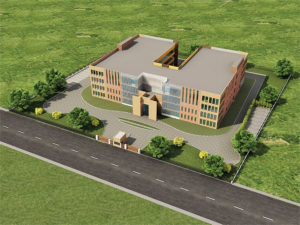
Glass Selection For Efficient Façade Design
Energy efficiency in a building is always a major concern for the architects all around the world. It is unfortunate that the efficiency of a building is majorly measured by the efficiency of the mechanical systems used in the building. Yes, the HVAC systems of the building consume the maximum energy, but the cooling load of the building also depends on the architectural efficiency of the building. If the building architectural efficiency is maximised, its cooling load will reduce, which will impact on the load on the mechanical system with minimum energy consumption. Therefore, both architectural and mechanical aspects are equally important to create an effective energy-efficient building. [caption id="attachment_32274" align="alignright" width="300"] Rear & Right Side View[/caption] [caption id="attachment_32251" align="alignright" width="300"] Rear & Courtyard View[/caption] Well, it’s appropriate to say that the architects now need to be energy literate. However, yet the architects are moving forward with the same principles...
Posted on: 01 Jul 2019

